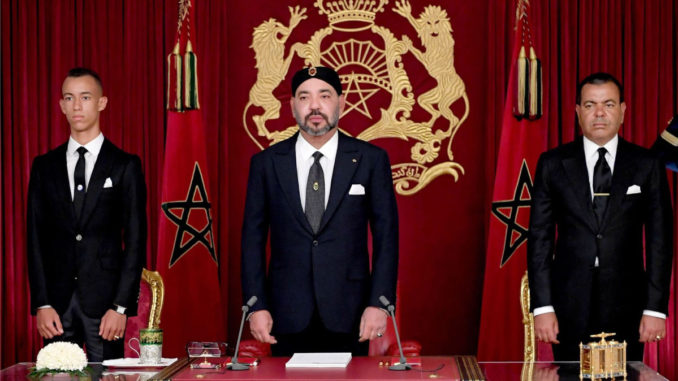
Morocco's institutions are the fruit of a history that is still young, barely sixty-six years old, but which is rooted in the traditions of a multi-century kingdom.
Morocco is a kingdom whose integrity and identity has been "forged by the convergence of its Arab-Islamic, Amazigh and Saharan-Hassan components, (…) nourished and enriched by its African, Andalusian, Hebraic and Mediterranean tributaries". This is the formula chosen to describe the country in the preamble to its constitution promulgated on 1 July 2011.
This 6th version of the fundamental law clearly recalls, from its first article, that the country lives under the regime of a constitutional, democratic, parliamentary and social monarchy.
Morocco's first constitution dates from 1962. It was under the impetus of King Hassan II that for the first time the Moroccan people voted by referendum to establish the rules for the organisation of the nation and the state, six years after gaining independence.
More than a hundred years ago, a first institutional attempt
History will remember that a first constitution was drafted in 1908 under the reign of Sultan Abdelhafid ben Hassan and already laid the foundations of a modern country with the separation of powers and the primacy given to human rights. This outline of democratic inspiration disappeared under the ambitions of the European powers and the signing in 1912 of the French and Spanish Protectorate over Morocco, thus closing the institutional exercise until 1962.
Today, Morocco functions under the bicameral system, i.e. with a legislative power composed of two chambers: the Chamber of Representatives, whose members are elected by direct universal suffrage for a five-year term, and the Chamber of Councillors, elected for a nine-year term by indirect suffrage. indirect.
The Government appointed by the King is derived from the House of Representatives. It is based on the majority coalition obtained in the legislative elections. ;
Regionalisation, the latest of Morocco's modernities
The major democratic innovation of the 2011 constitution is the introduction of regionalisation. The territory is now divided into twelve regions, each headed by a regional council elected by direct universal suffrage. Morocco is also divided into seventy-five provinces, each headed by a governor appointed by the king.
Commander of the Faithful
Mohammed VI has ruled Morocco since 1999, following in the footsteps of the first Sultan, Idriss I, founder of the city of Fez in the 8th century. He is the Head of State and of the armed forces. He is also, according to the Constitution, the Commander of the Faithful.
Islam, the official religion – there is no separation between church and state in Morocco as is the case in France – but also the Fundamental Law gives His Majesty the King a double legitimacy which makes him one of the last monarchs in the world to really exercise power.
In Morocco, the King governs.

Leave a Reply